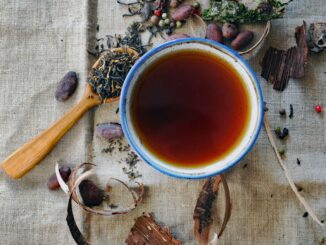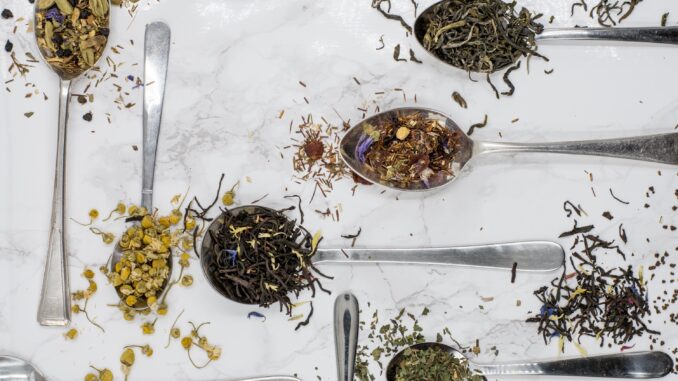
Not all teas are created equal; today, we begin a discussion on the different types of tea, how they vary in flavor, and how to properly brew them.
BY EMILY MENESES
SENIOR ONLINE CONTRIBUTOR
Feature image by Alice Pasqual via Unsplash
Though tea is a café staple, there’s still a lot about the drink that many don’t understand. What plants do tea leaves come from, and what separates the different types of tea from one another? How do the different kinds of tea vary in flavor, and do they need to be brewed in different ways? In our “Beginner’s Guide to Tea“ series, we’ll guide you through all of these questions and help you begin mastering the art of tea so that you can brew a delightful cup at your café or at home.
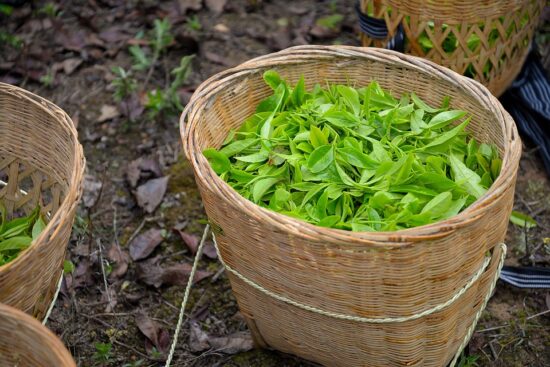
Photo by Patricio Hurtado via Pixabay.
Camellia Sinensis: Where All Tea Begins
All tea comes from the leaves of a single plant, Camellia sinensis—a species of evergreen shrub. The leaves of this plant typically emerge in early spring. After harvest, the leaves are processed in a variety of ways, resulting in different types of tea.
In this article series, we’ll be exploring the main types of tea: white, green, oolong, and black. We’ll also be touching on fermented teas (the best-known of which is pu-erh) and herbal teas, which aren’t made from Camellia sinensis but rather from herbs, flowers, and grains. In today’s first installment, we’ll look at white and green tea.
White Tea
Out of all the types of tea, white tea is the one that requires the least amount of processing—in fact, it essentially requires no processing at all. White tea gets its name from the fuzzy white down found on the young Camellia sinensis buds it’s harvested from. This tea is made simply by harvesting the youngest leaves and buds of the tea plant, then drying them in direct sunlight. This allows oxidation to happen naturally.
The tea leaves typically take one or two full days to air dry, and in instances where the surrounding climate is too moist or rainy, they may be gently tumble-dried on extremely low heat. When brewed, white tea is typically pale green or yellow in color and known for its light body, delicate aroma, and subtly sweet, floral, fruity, and nutty notes.
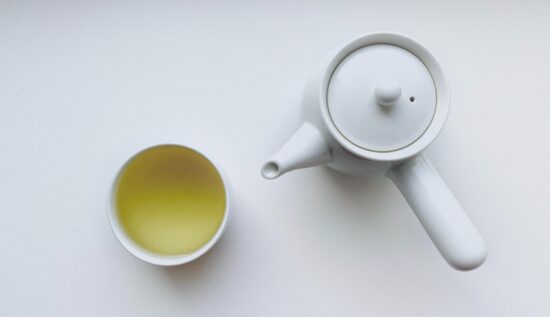
Brewing White Tea
Because of how delicate white tea is, it should never be brewed with boiling water; try to keep your water at just under 170 degrees Fahrenheit. If you don’t have a temperature-controlled kettle, you can bring water up to a rolling boil, turn off the heat, and let it sit for about a minute before pouring it over the tea leaves. For every one to two teaspoons of tea leaves, use eight ounces of water. Steep your tea for three to five minutes, depending on how strong you want it to be.
Green Tea
Green tea requires minimal processing, following the same process as white tea with one additional step: initiating oxidation by applying heat by pan-firing the fresh leaves over a wok or steaming them for 20-30 seconds. The pan-firing method is commonly used for Chinese green teas (such as gunpowder green tea or dragonwell green tea). The steaming method is characteristic of Japanese green teas (such as sencha or genmaicha).
When brewed, green tea exhibits a green or yellow color. Compared to white tea, it’s more earthy and savory, with toasty, grassy, and vegetal flavors. Green tea is also more nutty and buttery than white tea, while still maintaining light floral undertones.
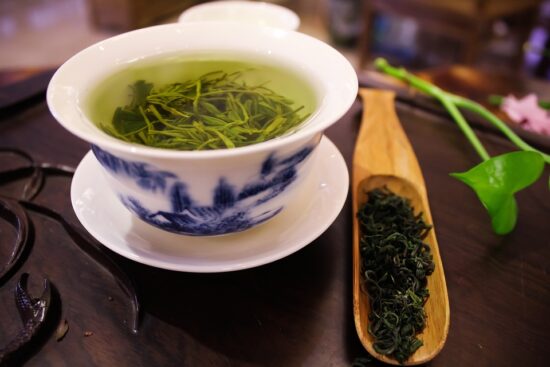
Brewing Green Tea
Like white tea, green tea is delicate and therefore should not be brewed with boiling water. When brewing green tea, your water should be between 175 and 185 degrees Fahrenheit—otherwise, you’d risk your tea developing bitter flavors. For every teaspoon of green tea leaves, use eight ounces of water. Steep your tea for about three to five minutes before serving.
Some Pro Tips
When brewing any type of tea, keep the following tips in mind for the best results:
- When serving tea, it’s best to pre-warm your teacup. You can do so by pouring a small amount of hot water into your cup, then tossing it out before pouring your tea.
- Avoid using tap water or hard water—doing so can alter the delicate flavors of the tea. Try to always use spring, filtered, or purified water.
- If you don’t have a temperature-controlled tea kettle, using a thermometer can help achieve proper brewing conditions.
- Covering your tea while it’s steeping is essential to allowing the flavors to fully develop. This is why it’s best to use a covered teapot or kettle.
Stay tuned for part two of this article series, where we’ll explore oolong, black, fermented, and herbal teas in depth.


